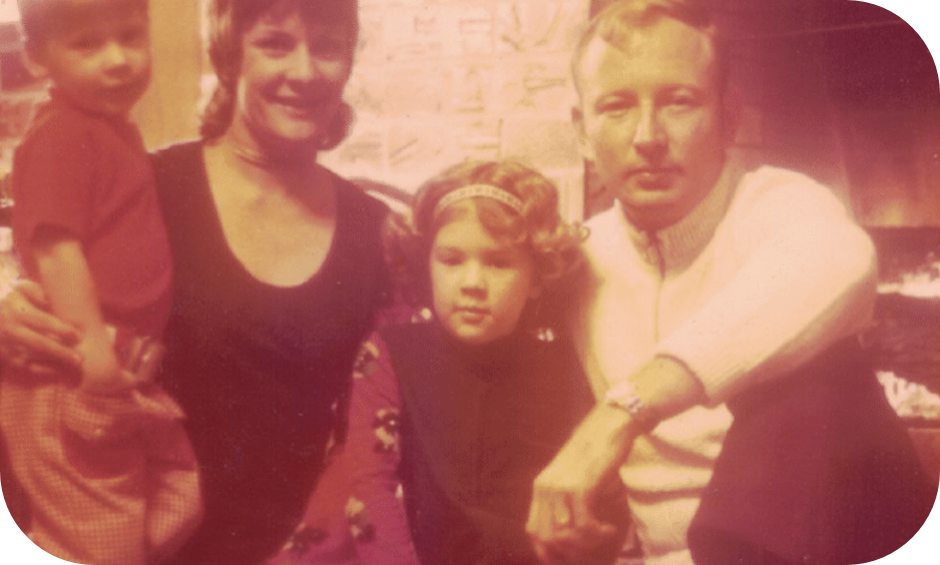
Greg Adams, LCSW, ACSW, FT
Program Coordinator
Center for Good Mourning
[email protected]
We Need a Sympathetic Restoration
My best friend and wife (same person) has a new entertainment obsession: the British television show, The Repair Shop. In each episode, master craftspeople receive and expertly, and amazingly, repair a wide variety of family heirlooms including toys, furniture, household items, art pieces, and tools. Part of the appeal is the demonstration of incredible skill and creativity to repair broken and heavily damaged items. Another significant part of the appeal is the family members and their stories. Each item in need of repair has a rich history full of meaning. The ability of the item to carry that meaning has been damaged, limited by its brokenness and sorry state. As family members bring in their items, they are hopeful yet sometimes skeptical. They try to keep their expectations low in order to avoid disappointment in the final product. Perhaps there are some who do feel disappointed when the repaired item is revealed in the end, but if so, they don’t seem to make it to broadcast. The stories which are shown end with expressions of delight, excitement, and gratitude by the family members. It is a family-affirming and heartwarming show.
There is a concept in the show that was new to my best friend and wife and that she shared with me. The concept is “sympathetic restoration.” When a broken or damaged item is brought to the creative experts at the repair shop, the goal is not to make the item “look like new” as that would erase something important about its history. The goal instead is to restore the item to wholeness and functionality while retaining the character of its age and experience. Looking at the repaired item, one can see that it is old and has had its miles. It does not look brand new, but it does look whole. Wounded, perhaps, but restored to good health.
Being one deeply acquainted with loss and very familiar with grief, my best friend/wife wondered if this concept of “sympathetic restoration” might be a helpful way to think about the goal of finding ways to live again after loss. As with almost all of her suggestions, I am inclined to agree.
When we experience a horrible loss through death or otherwise, the life we had before is damaged and broken. How could it not be? It was dear to us, a precious thing, and was a source of comfort, joy, and meaning. Big losses mean big changes—life as we knew it is gone. It can feel like we have lost everything, and that feeling deserves respect. But it’s not true. If we are still alive and here to feel such devastation, we haven’t lost everything. Something of what was continues though it be deeply wounded or lying in pieces at our feet. When we come to a place where we begin to see and understand that all is not lost, we gather the damaged and broken pieces of our previous life and wonder what is now possible. And we know that whatever may be possible, it won’t be, can’t be, life as it was before.
It is here that the idea of a sympathetic restoration can be a helpful lens. Part of its appeal is the hope that comes with the word restoration. The new status quo of injury and dysfunction need not be our future status quo. Life can be better although it will never return to exactly what we knew and had before—and that hard reality also deserves respect and support. We understand that what was lost cannot be ignored or avoided, and it would be foolish to pretend otherwise. Restoration suggests that what is left, nevertheless, is valuable and worthy of care and preservation. What remains, although changed, continues to hold potential for comfort, inspiration, and usefulness.
In this healing process of restoration, it helps to have a caring and compassionate approach to what is left. A sympathetic approach which doesn’t try to erase the past. It doesn’t help to hide the scars left behind and the evidence of hard and heavy seasons. That would not be real nor sustainable for the changing conditions the future will bring. We need restoration and we need more wholeness but not at the price of the integrity of what we are seeking to restore. Let’s be honest and keep it real. Our restored life is not a brand-new shiny thing. It is a blending of new and old and should look just like that as we compare it to the wholeness we had before our great loss.
Sympathetic restoration offers hope in the midst of realism and realism in the midst of hope. It’s not cheap hope, like putting on a fresh coat of paint to avoid addressing deeper concerns. And it’s not a despairing lack of expectations—why bother because life can never be of value again? It works because it believes in having a future while honoring the past.
The additional appeal of a sympathetic restoration is that it empowers our memories and connections. We see this with family members in The Repair Shop when their sympathetically restored family heirlooms are presented to them. Their new yet old items take them right back to a particular time in their lives and to those dear to them. Their sympathetically restored pieces do that in ways they could never accomplish in their broken, damaged states or if they were presented scrubbed and devoid of any evidence of their histories.
Our lives after great loss need it all. We need hope that a valuable but different life is possible in the future. We need respect and support for the aging and wounding that we have experienced. We need wholeness that provides present usefulness while maintaining bonds to our meaningful past.
What we need is a sympathetic restoration.
Thank you, wise friend.
If you haven't already, please take this brief survey and let us know what you think of The Mourning News. Your feedback on The Morning News - what's helpful and what's not, ideas and suggestions, and questions to be addressed in future editions - is very welcome.
Send comments and questions to [email protected].
Writing a letter to someone who has died is powerful way for grieving people to keep and transform their relationship with the dead. It can also be a safe place to express feelings and wrestle with challenging life situations. And it is a way to not feel so lonely.
In the young adult novel, The Night Diary by Veera Hiranandani, Nisha is a 12-year-old girl who uses letters to her deceased mother in all these ways. It is 1947 when India is gaining its independence from the British and just before “partition” when India is divided into two nations: Muslim-majority Pakistan and Hindu-majority India. During partition, Muslims fled India for Pakistan and Hindus fled India for Pakistan. Tragic sectarian violence broke out and at least a million people died as 14 million people moved from one place to another—the largest mass migration in history.
Nisha has lived with the loss of her mother since the birth of herself and her twin brother. As many children do when they have lost a parent early in their life, they miss their parents in different ways as they enter adolescence with its heightened focus on identity issues. Nisha misses her mother in new and significant ways and begins writing to her in a diary, and Nisha’s story and the story of her family is told through these diary entries.
As the story begins, Nisha lives in a large house near a hospital where her father works long hours as a doctor. Also in the house are Nisha’s paternal grandmother and her twin brother. Nisha’s father is Hindu but her mother was Muslim, and the beloved cook for the family, Kazi, is a Muslim man. Nisha and her brother ponder what their mixed heritage means as they learn that with partition their home will no longer be India and will no longer be safe for Hindus. After a time of great consideration among the adults, the decision is made that the family must leave for their own safety.
The journey is a harrowing one and much to Nisha’s dismay, Kazi is left behind for his own safety. Nisha is a quiet girl who finds it hard to speak out loud, but she feels most comfortable in the kitchen with Kazi. The first part of their journey is to an uncle’s home, her mother’s brother, whom the children have never met. A Muslim man, he also does not speak but his silence is due to an unrepaired cleft lip and palate. Being Hindu, all are at great risk as they hide in the uncle’s home before continuing their journey east.
The Night Diary is a compelling and effective story on many levels. It is a very personal story of a girl who grieves the absence of her mother and searches for ways to be connected. It is the story of loss of home and homeland and a world where everything once seemed to make sense. And it is the story of the loss of identity where Nisha and her brother are no longer sure about who they are and how they fit into the world. Along with the losses, it is a story of learning, bravery, family bonds, and hope as their physical journey is accompanied by an internal journey of growth for Nisha and her family.
In a world that continues to be too often divided by conflicts between neighbors with different beliefs and cultures, this is an important story, bigger than the compelling-enough story of a 12-year-old girl grieving the loss of her mother.
 |
Among the new toolkits on the National Alliance for Children’s Grief website, www.nacg.org, here is a short and helpful guide for preschoolers dealing with big feelings.
Download the guide
 |
 |
When an adult gets a cancer diagnosis, there are questions of who to tell and how. When that adult is a parent, an additional challenge is what to say to the children.
 |
“One of Dame Cicely Saunders’ foundational tenets of palliative care is embodied in her words, “You matter because you are you, and you matter until the last moment of your life.” Dignity is the inherent worthiness of being human, of mattering until that last breath.
But how do we ensure that we reflect that inherent dignity back to those in our care?”
ARKANSAS PROGRAMS
Good Mourning Grief Support Groups
Good Mourning Grief Support Groups are for any child or teen, ages Kindergarten through high school, who have experienced the death of a family member or friend. There are also support groups available for the adults in the family. There is no charge for the program, but a completed application is required for each child or teen. Each series goes for 8 weeks:
In-person series on Tuesdays on October 1, 2024 with a Parent Orientation on Tuesday, September 24.
To request an online application, go to www.goodmourningcenter.org. For more information, call 501-364-7000.
Alliance for Grief and Loss
Alliance for Grief and Loss will be provided online in a video-conference format.
The Alliance for Grief and Loss is an informal coalition of helping professionals interested in grief and loss issues. Meetings will be on Zoom. “Business” will be at 11:30 am and the program will begin at 11:45 am unless otherwise noted. Live presentations will end at 1:00 pm and 90-minute webinars will end at 1:30 pm. Zoom connection information will be sent prior to each meeting. Unless otherwise noted, meetings will be on the second Friday of the month.
There will be no meetings June-August. Meetings will resume in September.
Please email [email protected] for more information or to be added to the email mailing list for the Alliance for Grief and Loss.
All are welcome.
Mount Eagle Grief Retreat
December 6-8, 2024
A retreat to help support and equip those in the helping professions to be of service to others experiencing grief led by Greg Adams from the Center for Good Mourning at Arkansas Children’s Hospital. Limited to twelve participants. For more information and to register, go to https://mounteagle.org/events/ .
ONLINE EDUCATION
SUMMER CONFERENCES